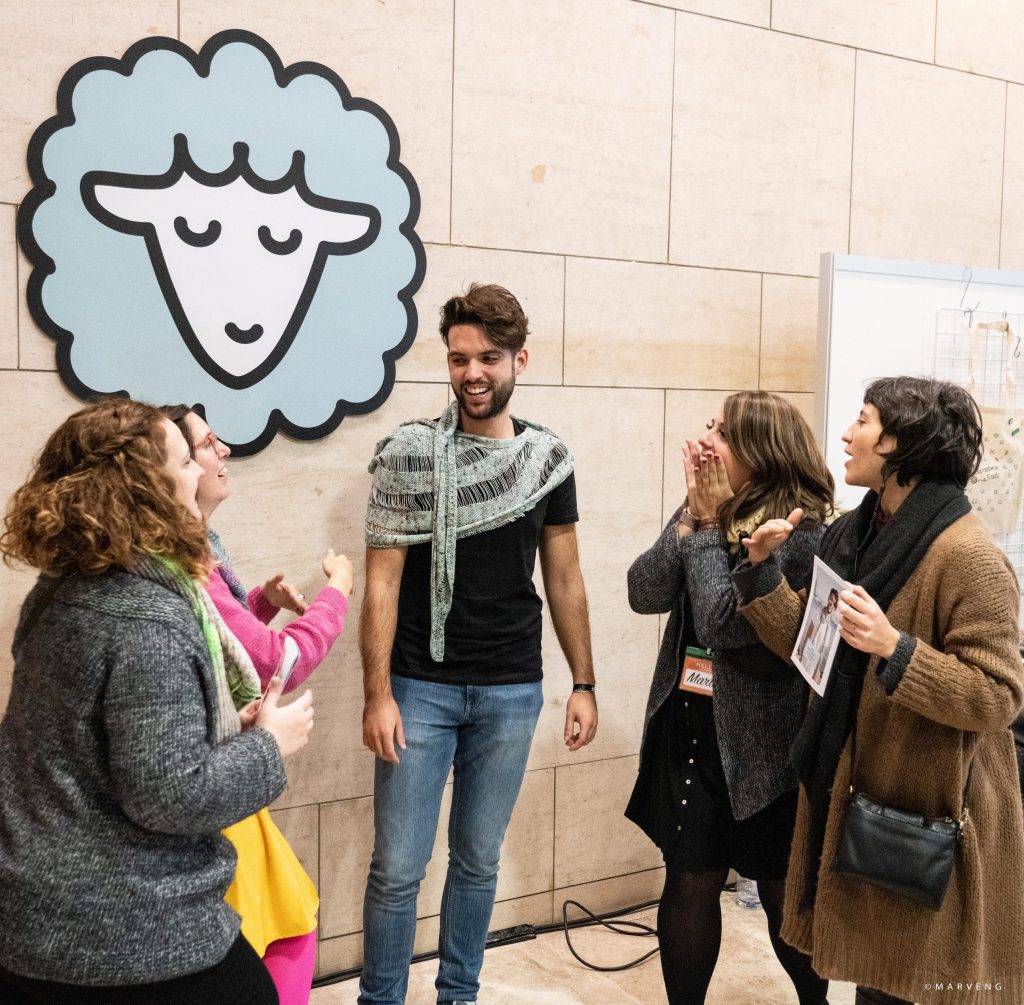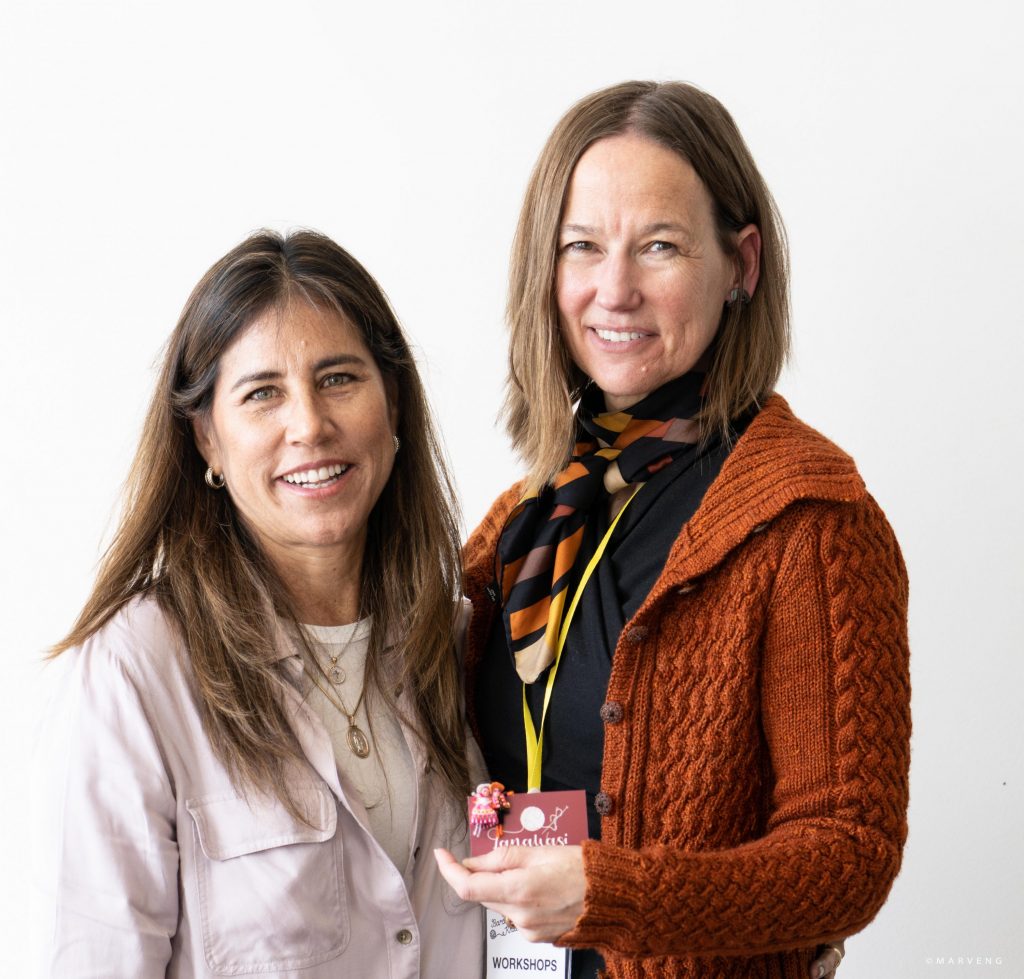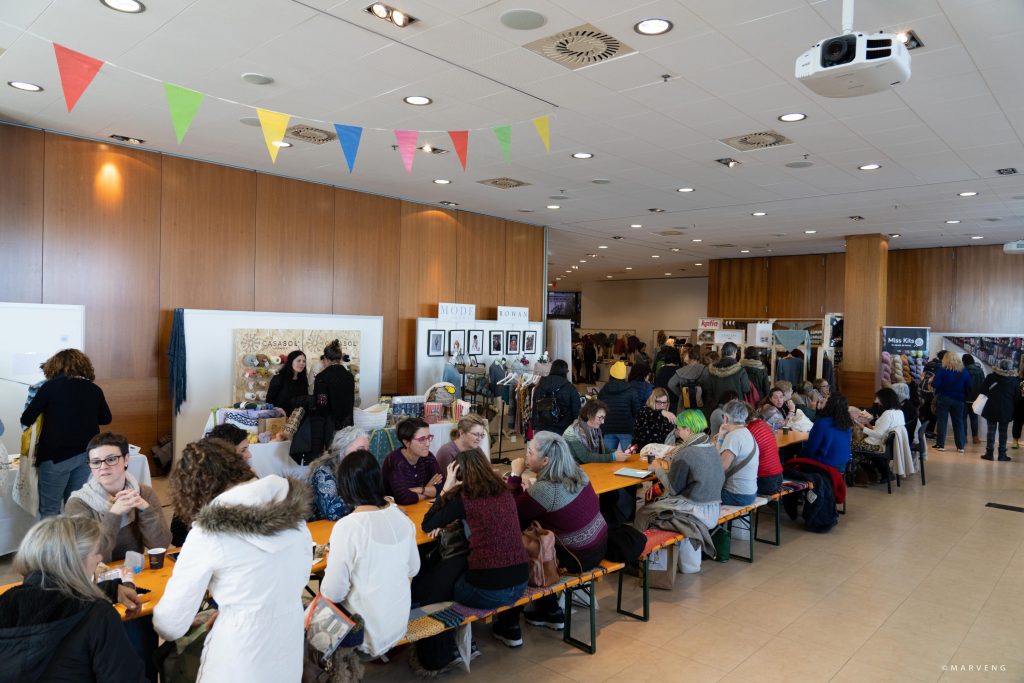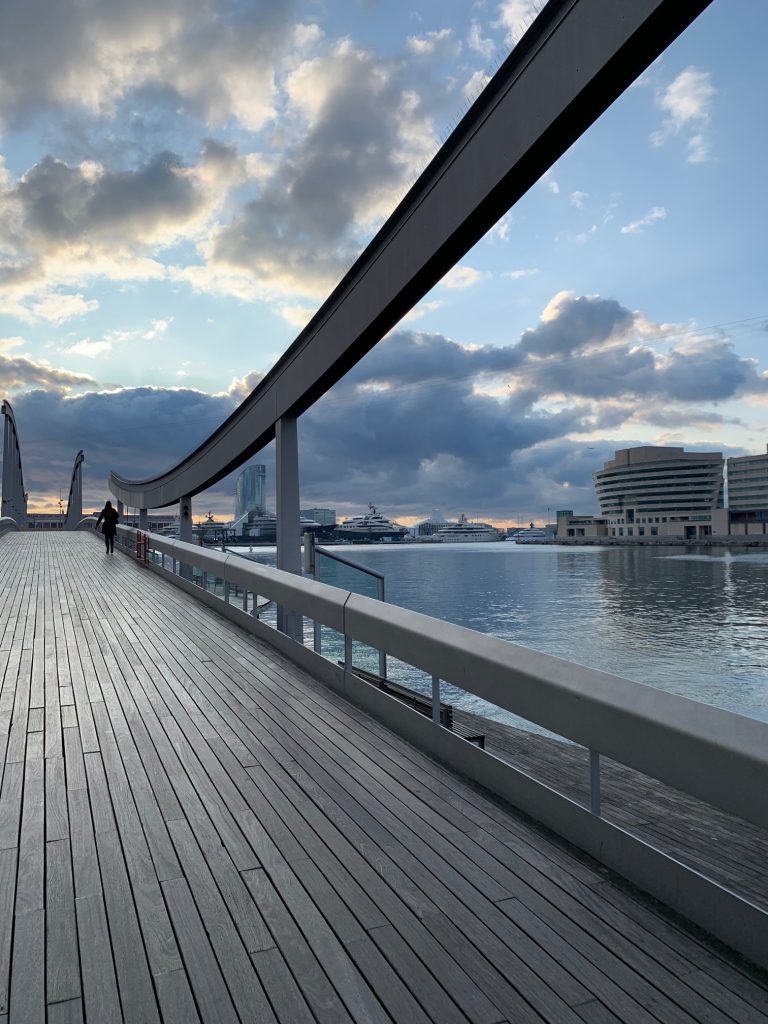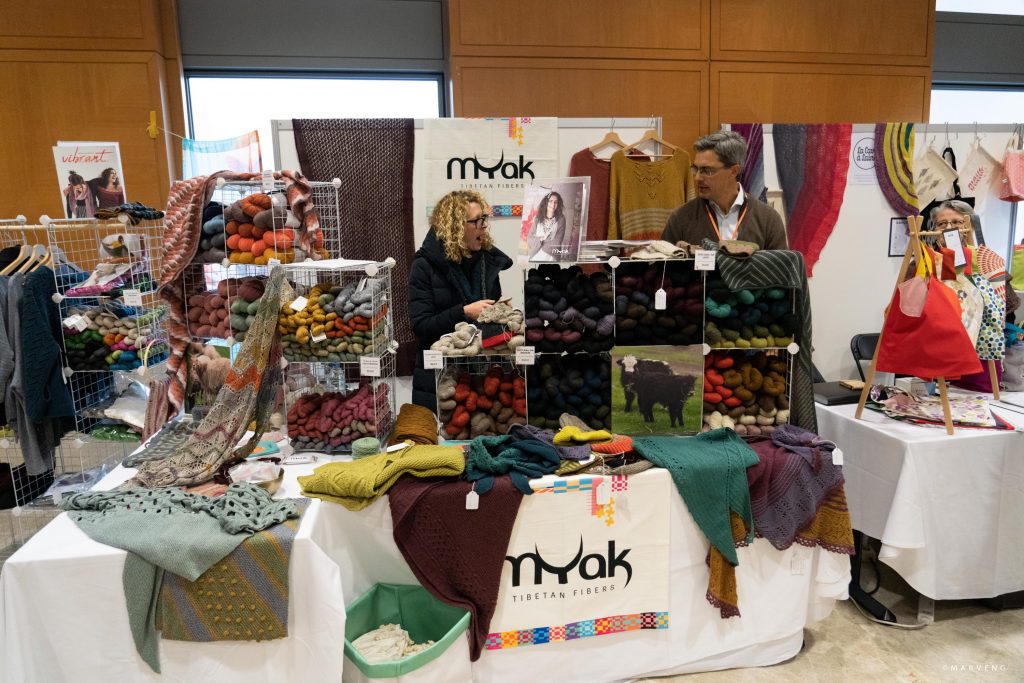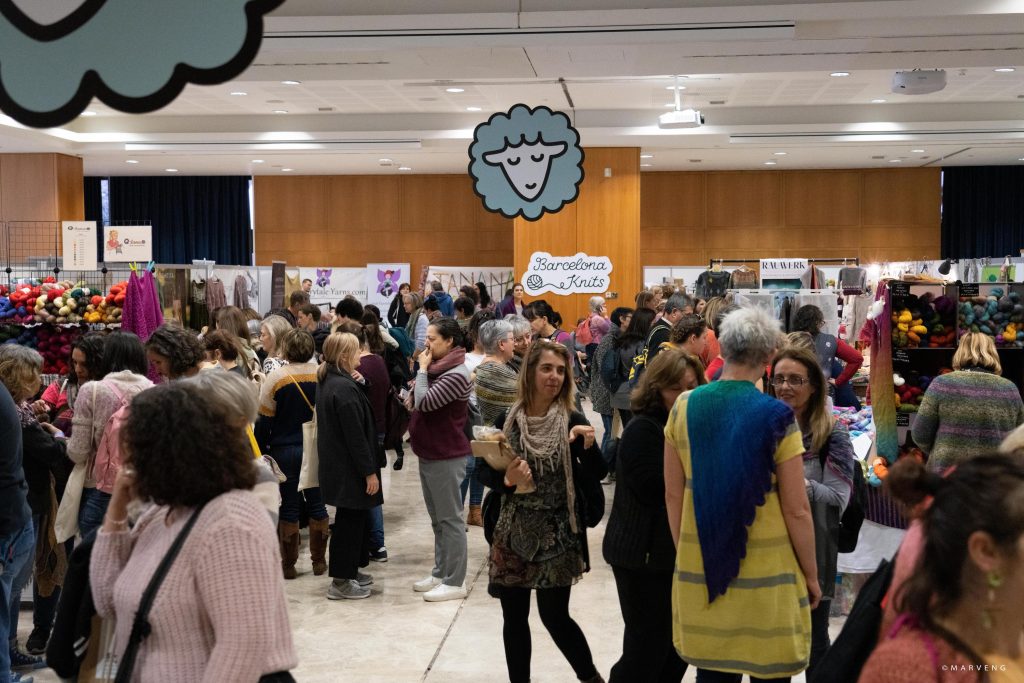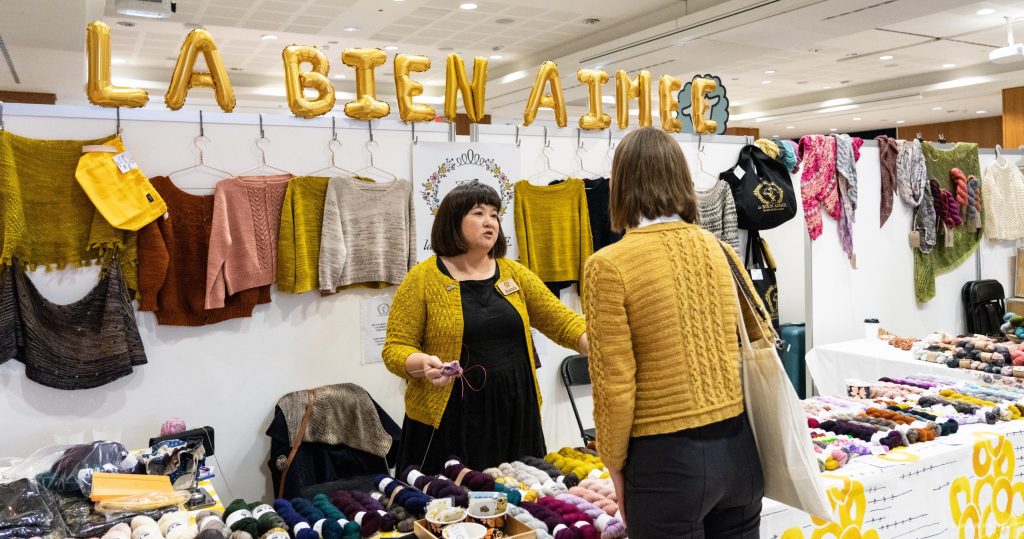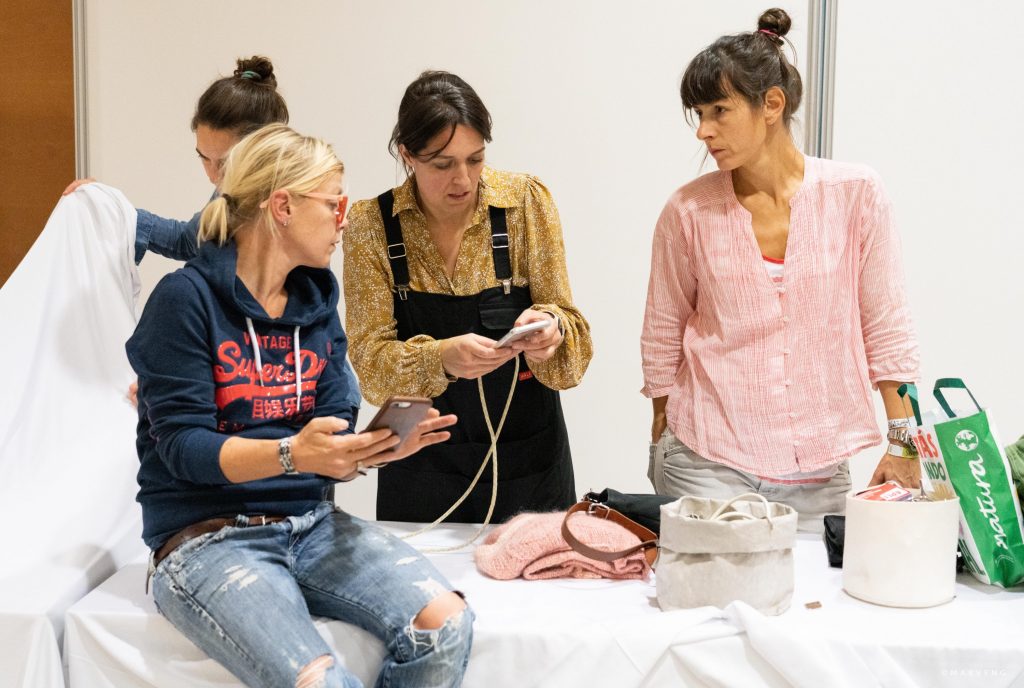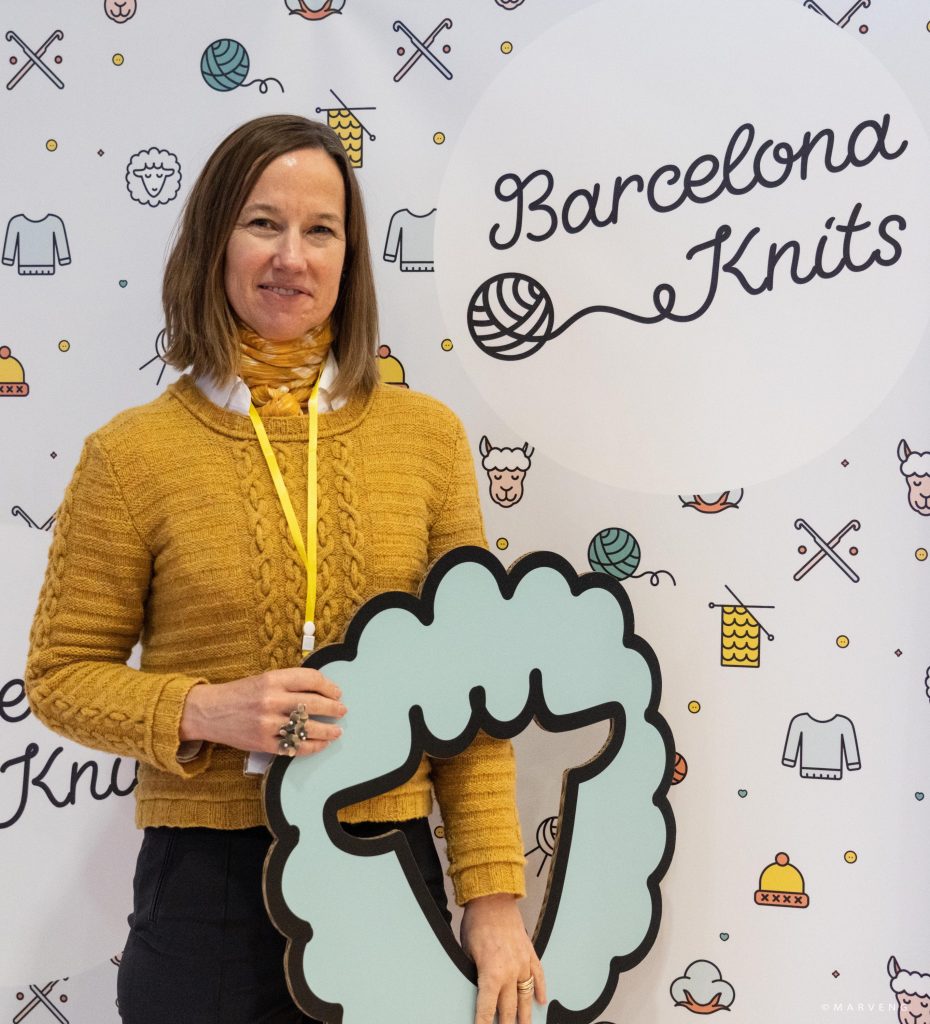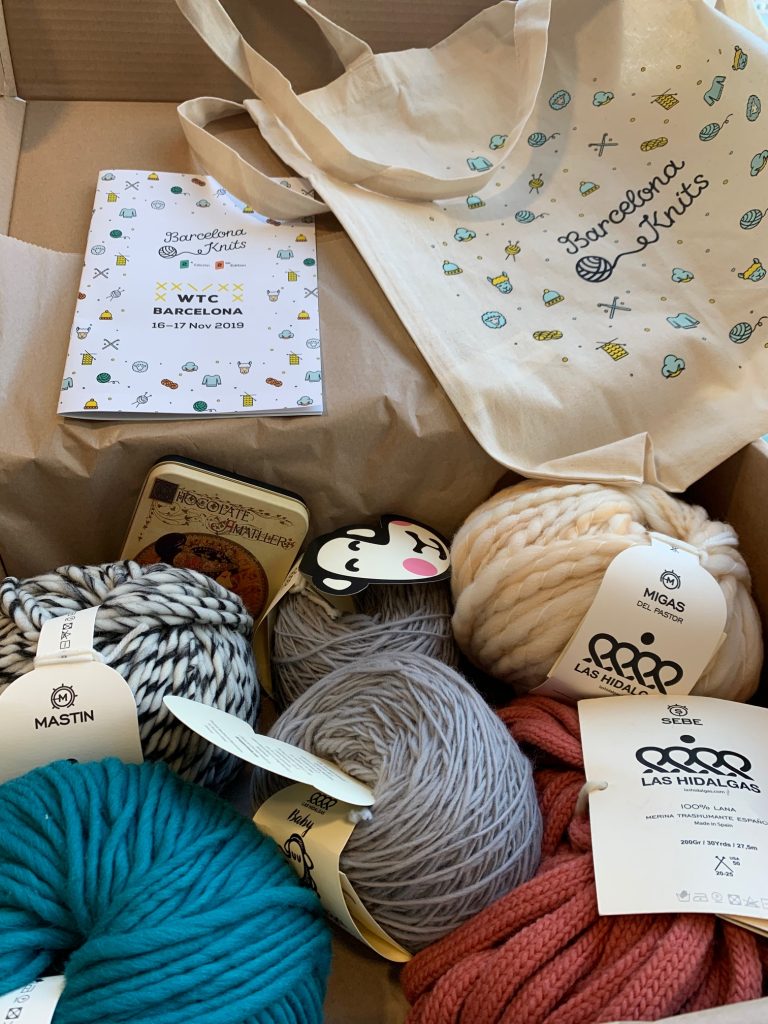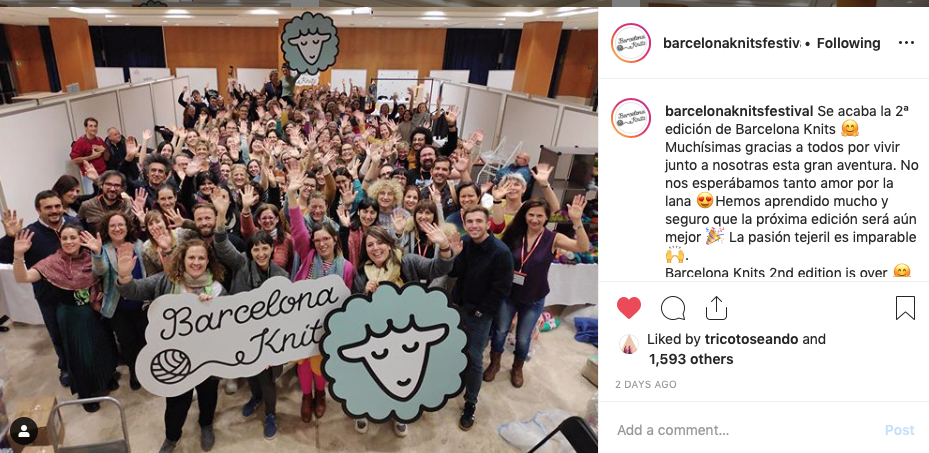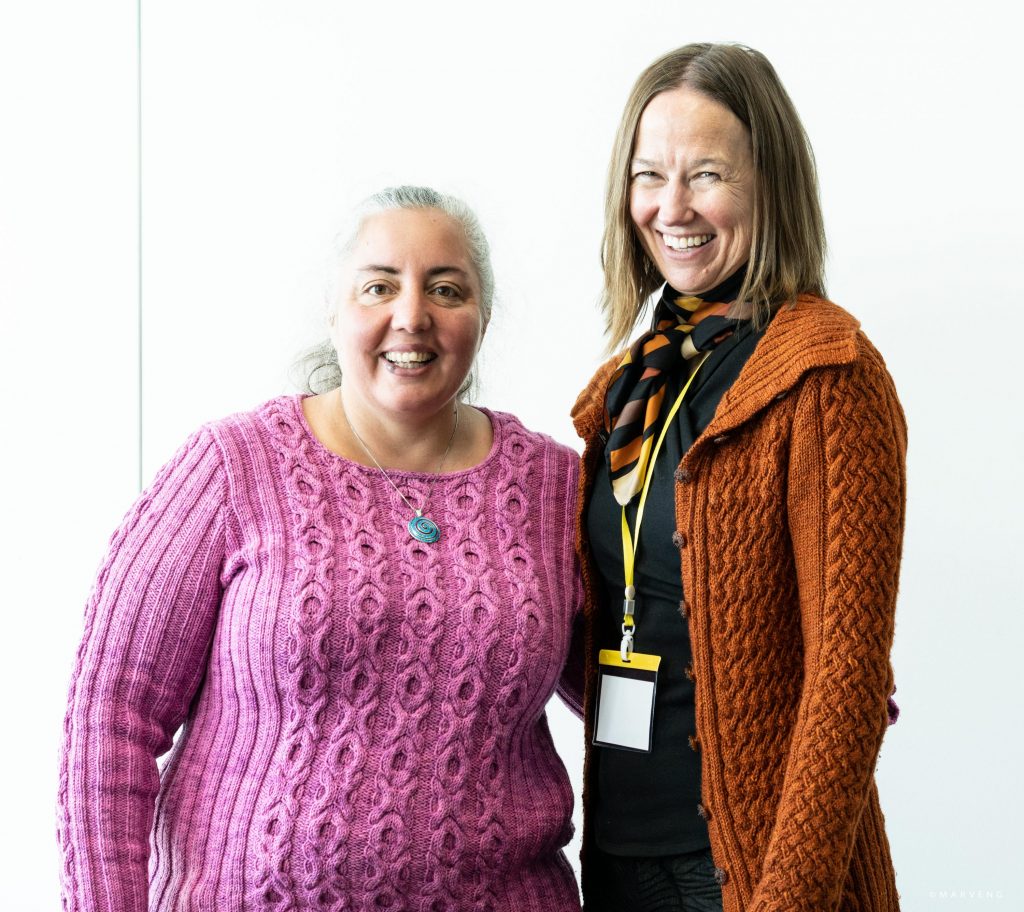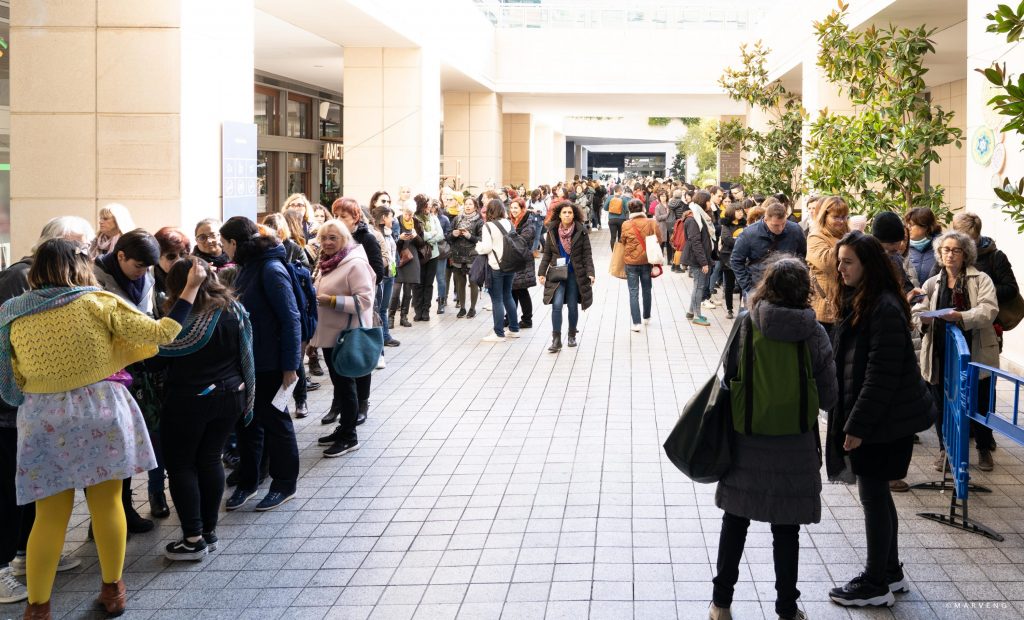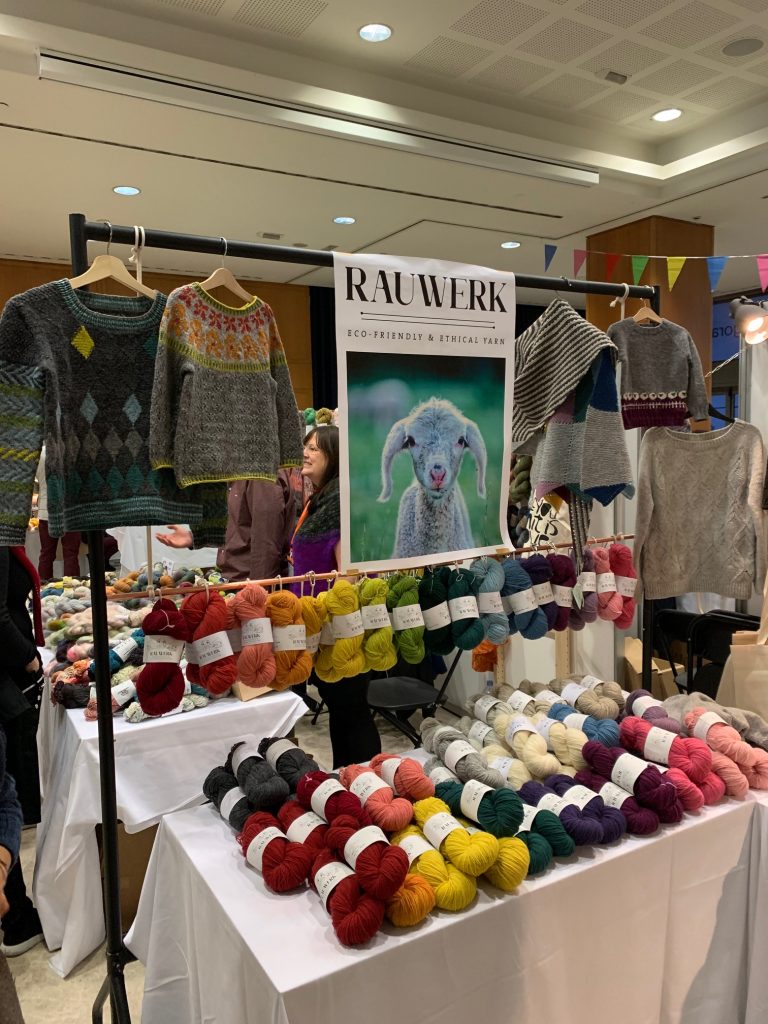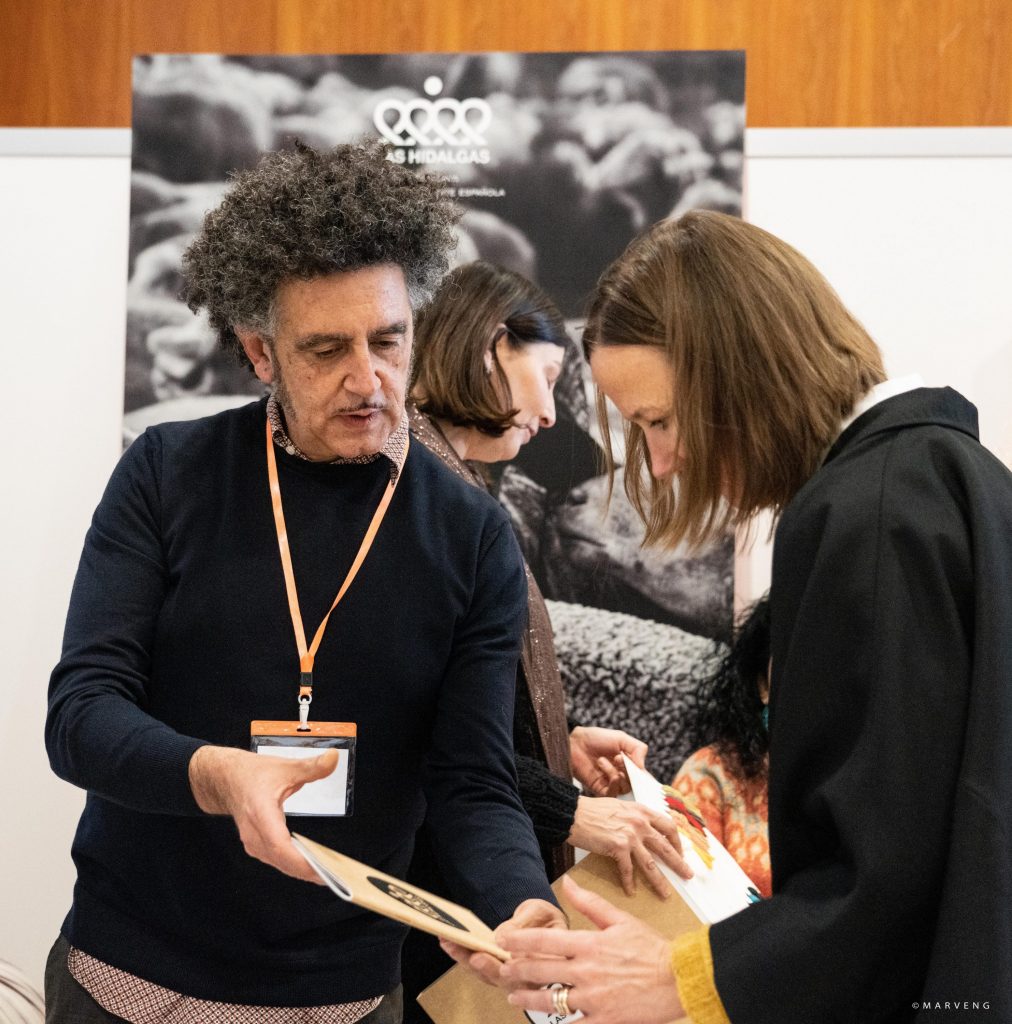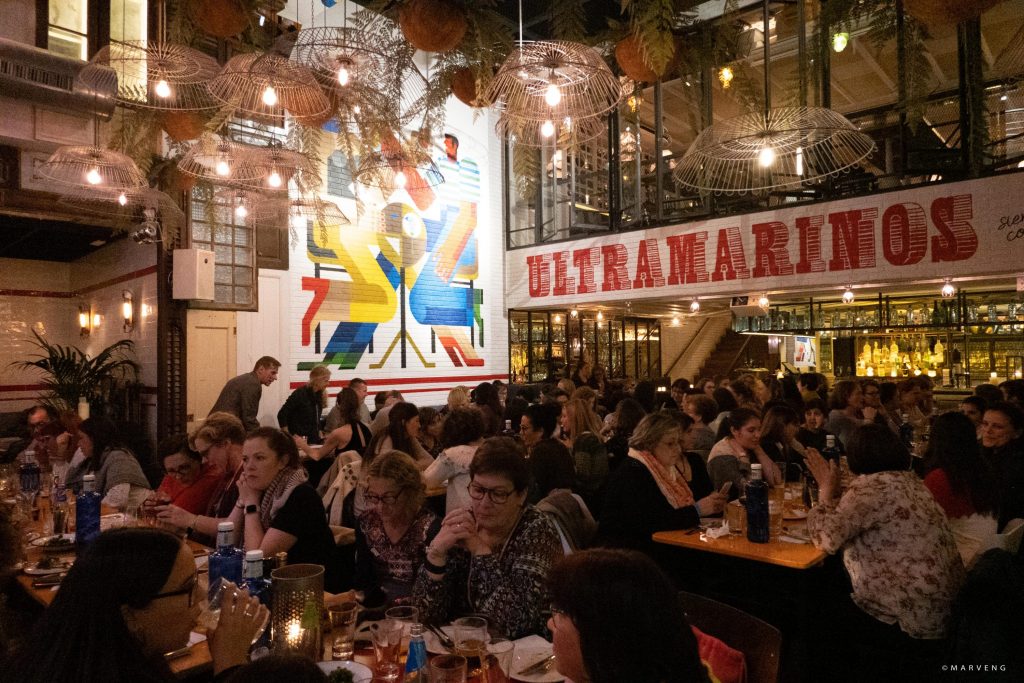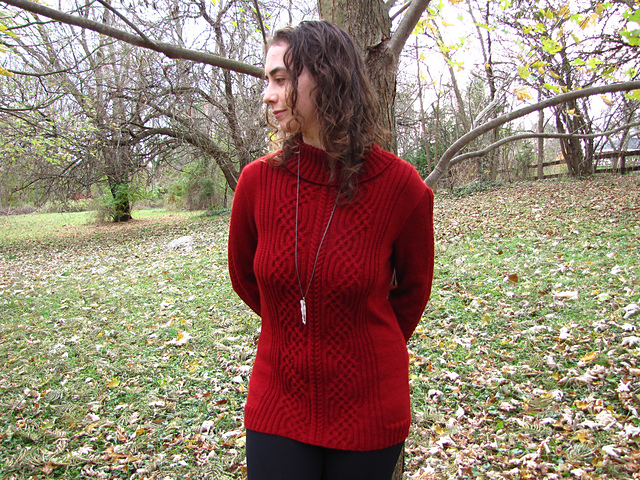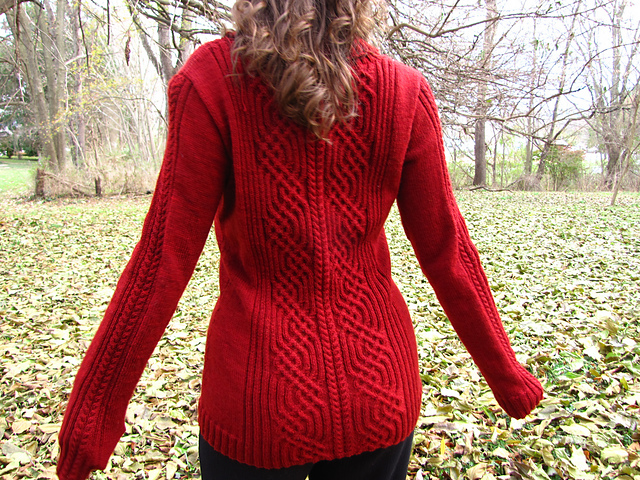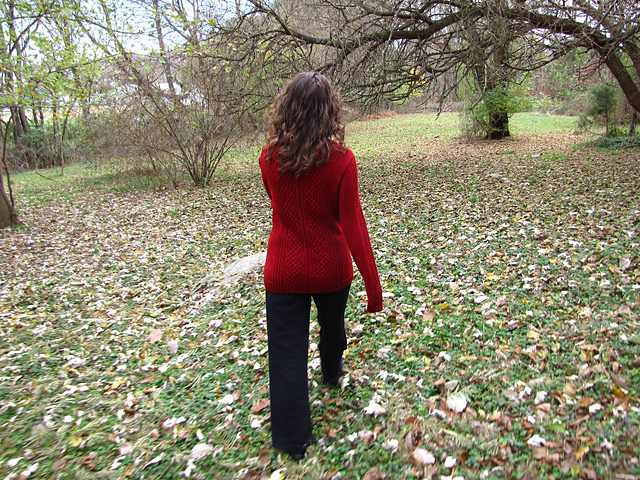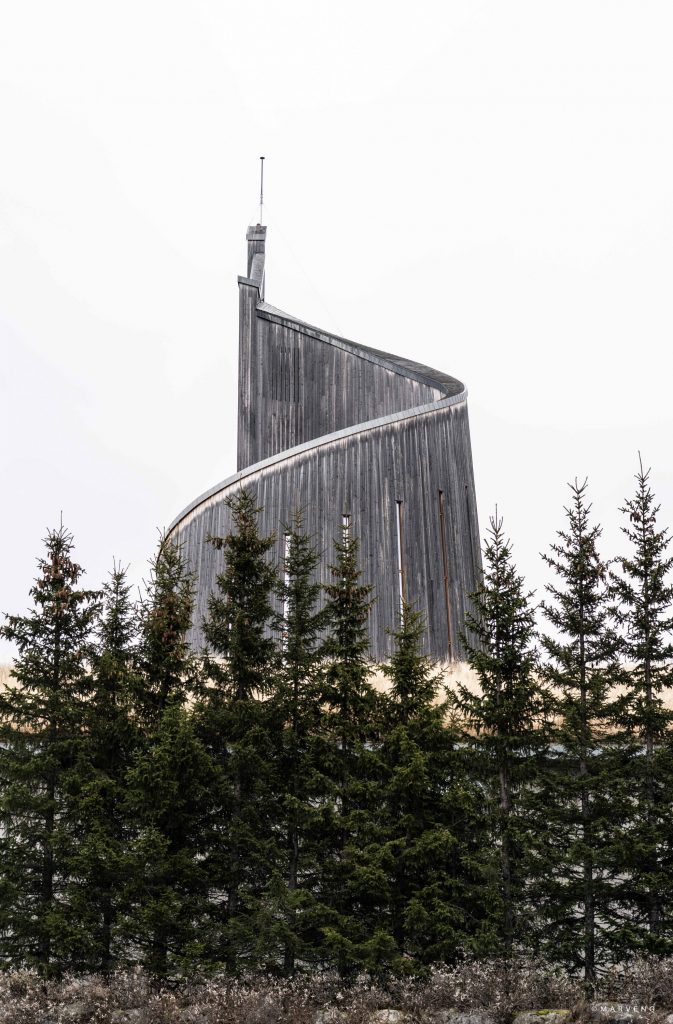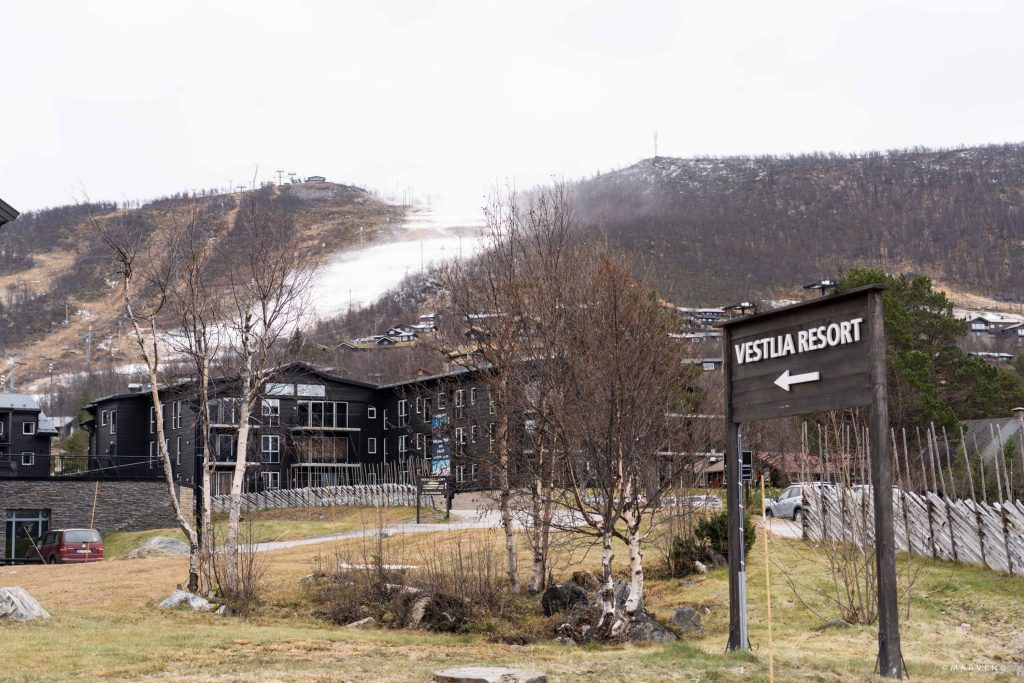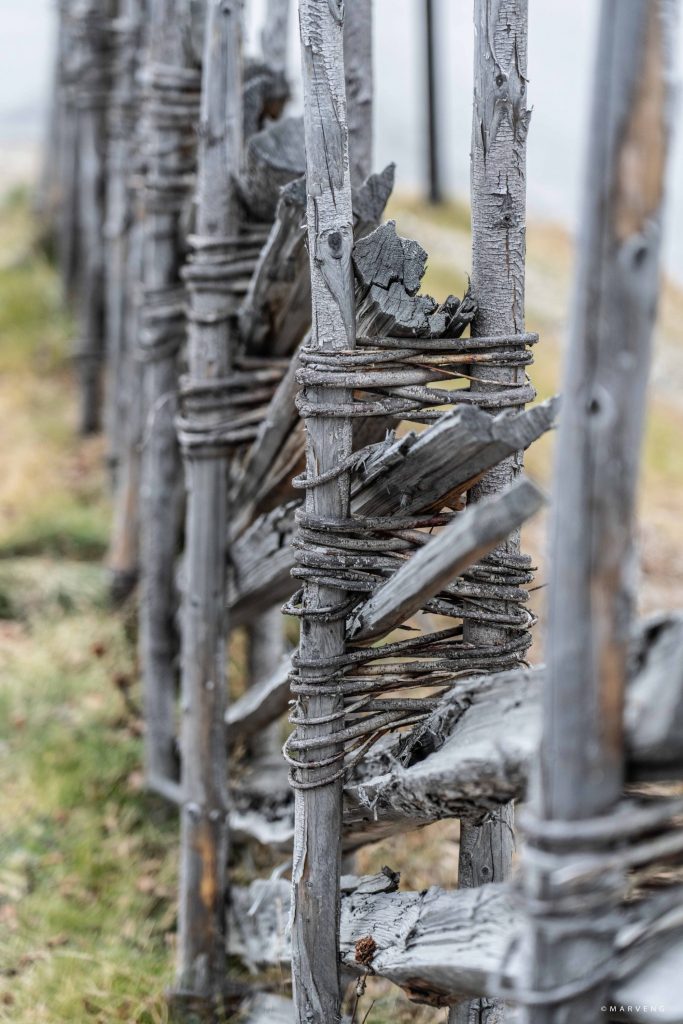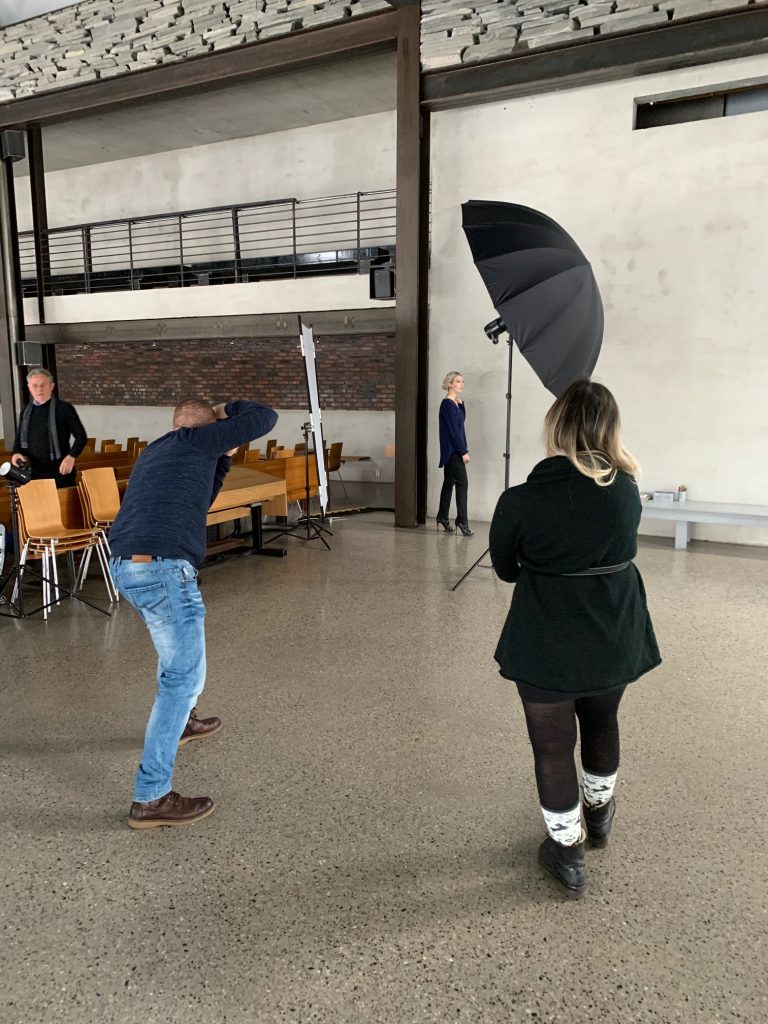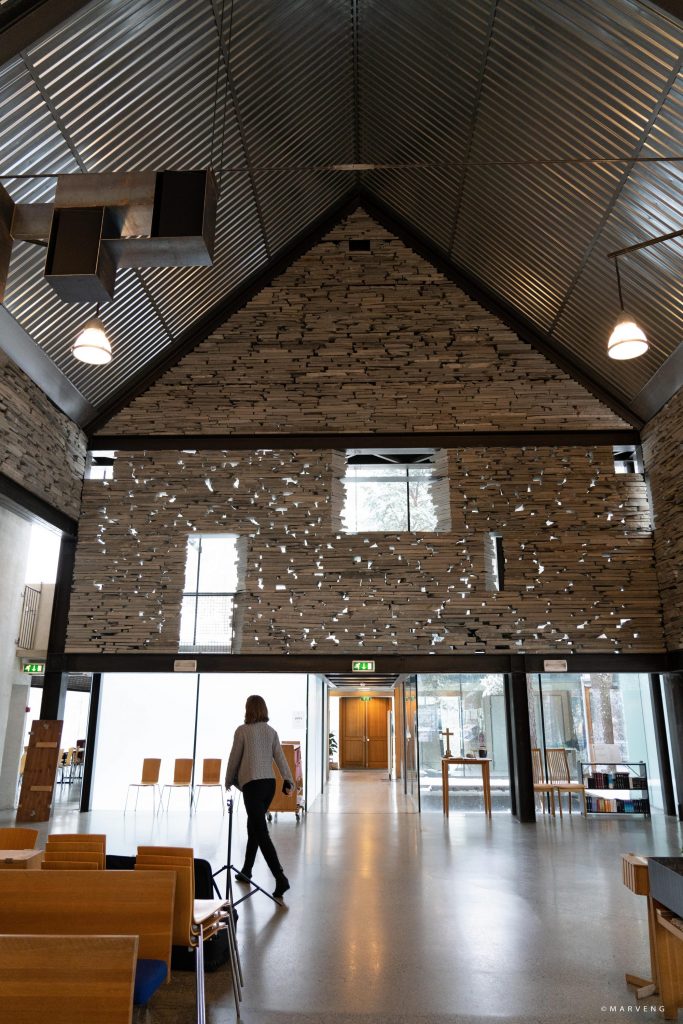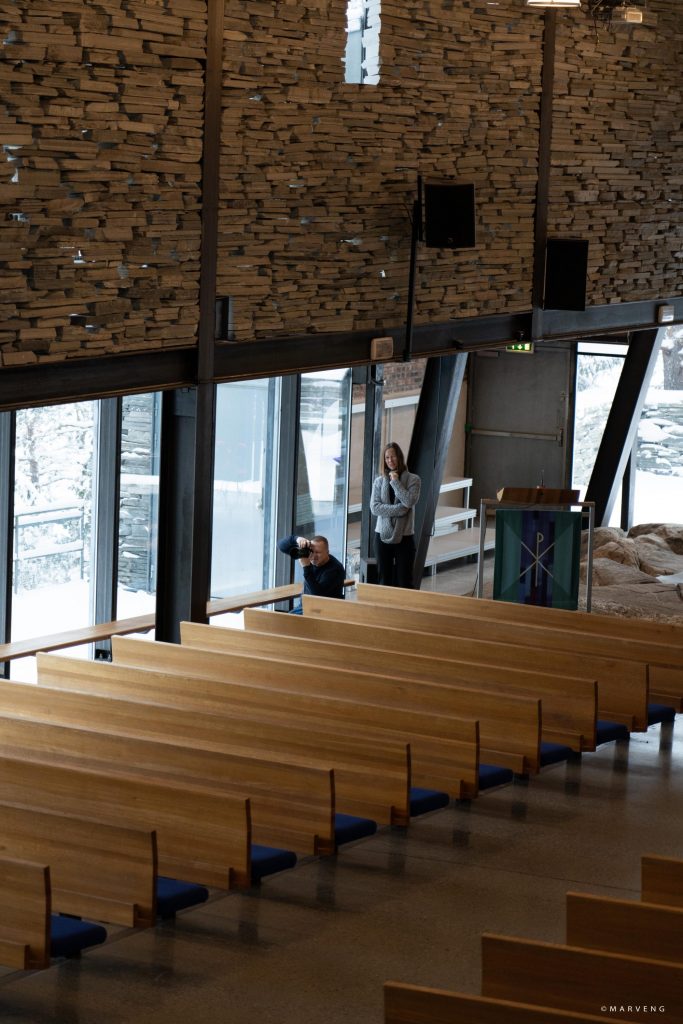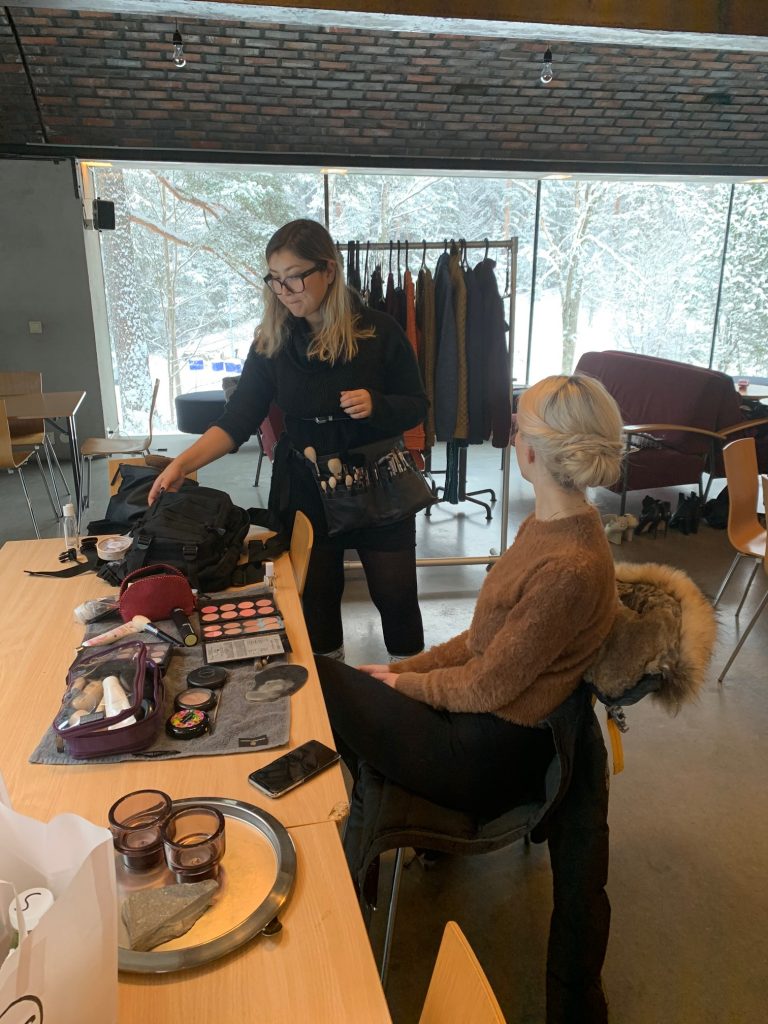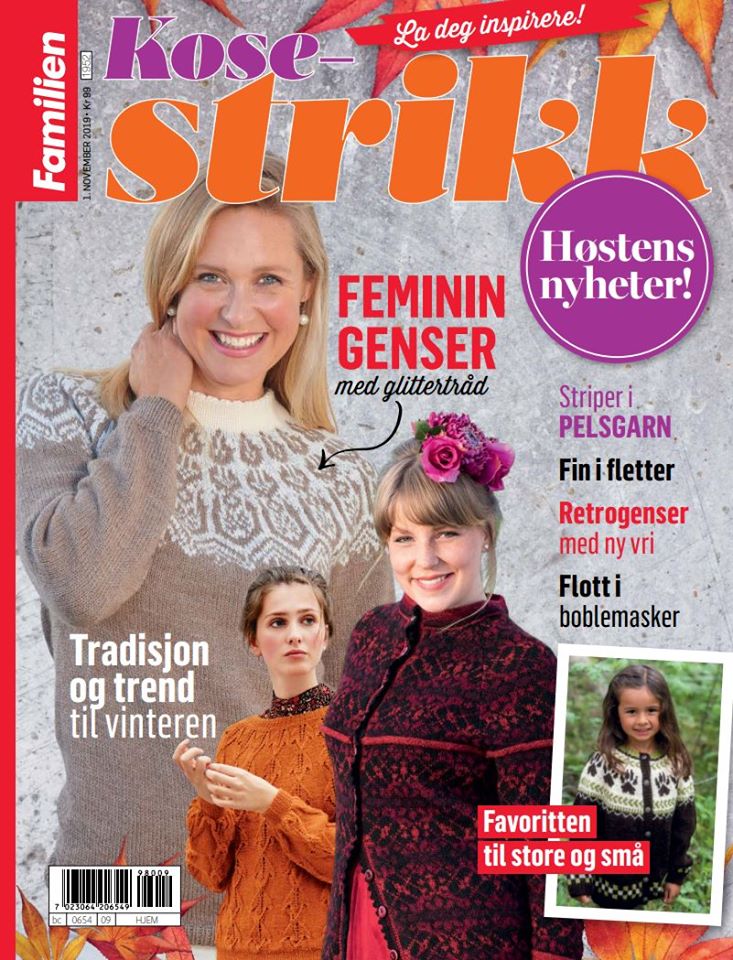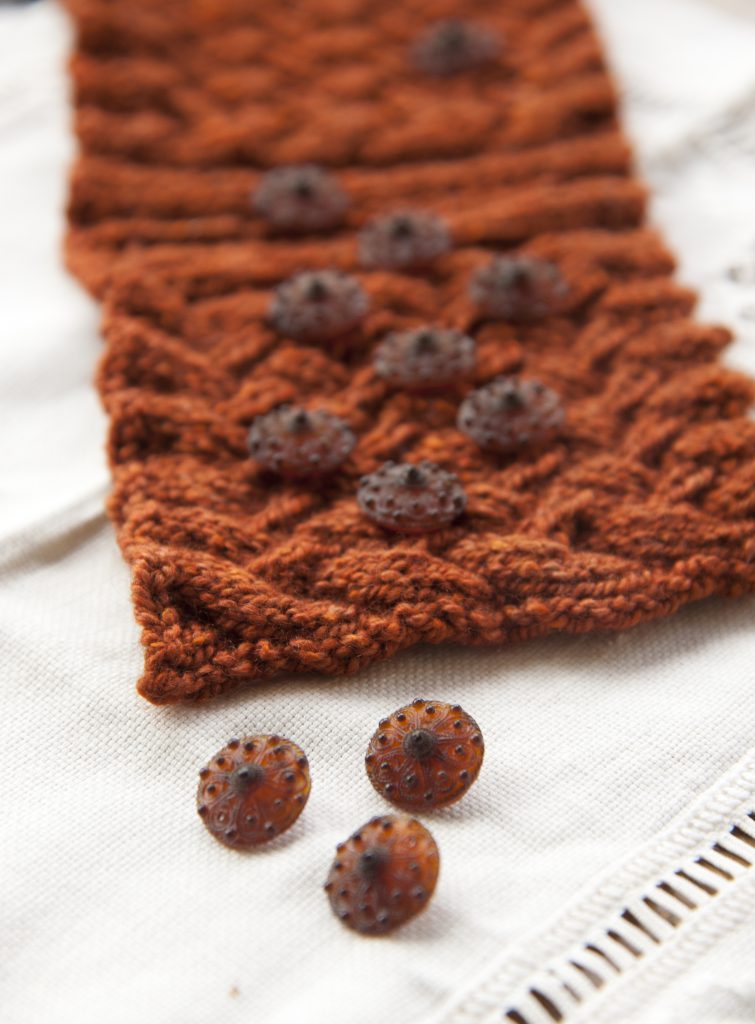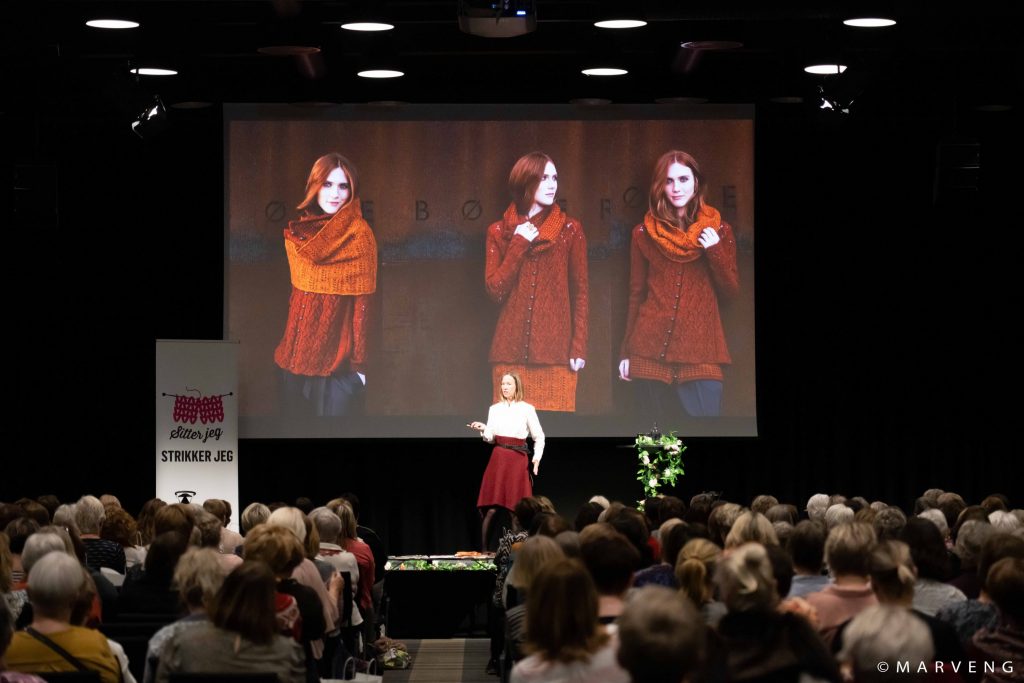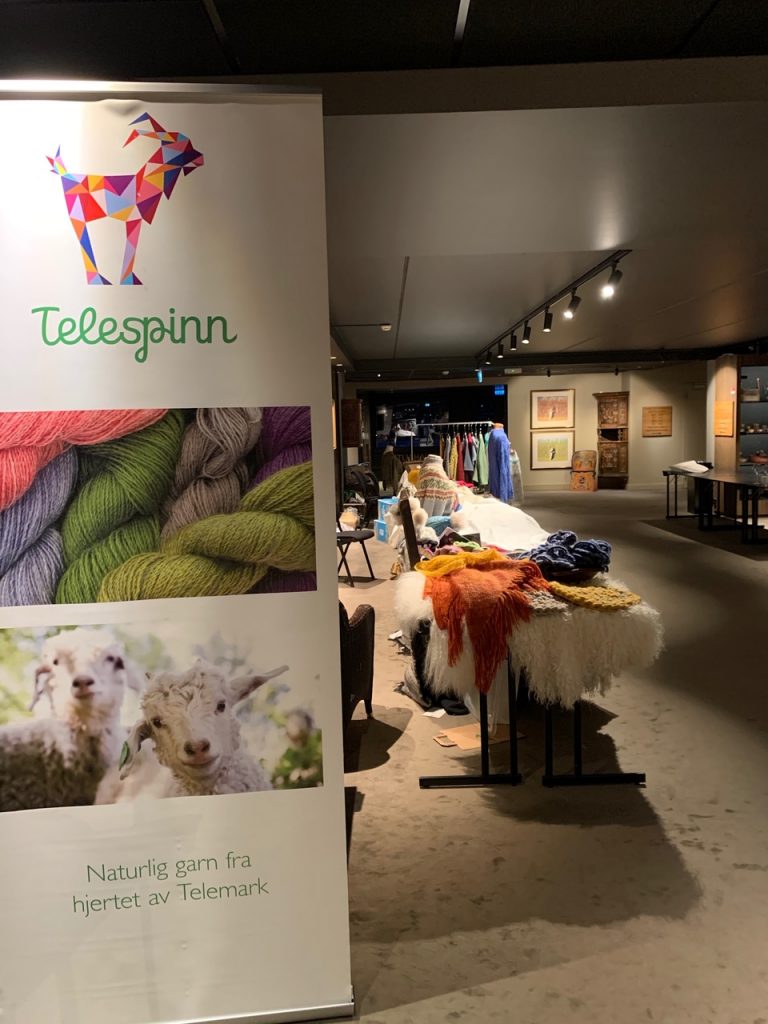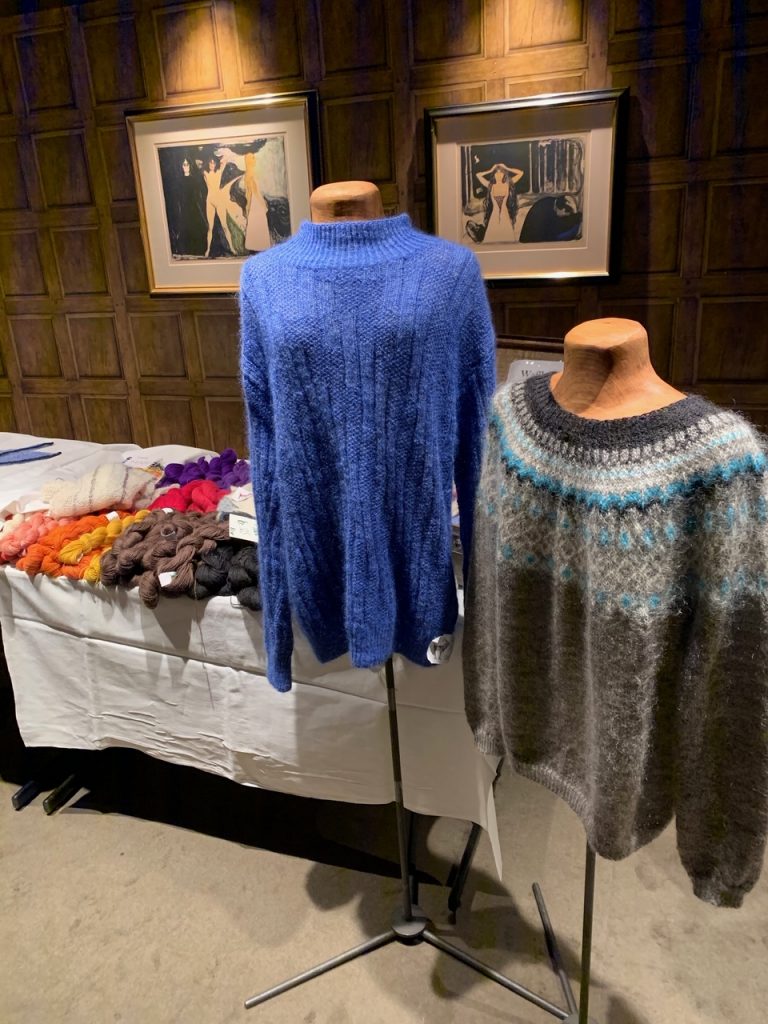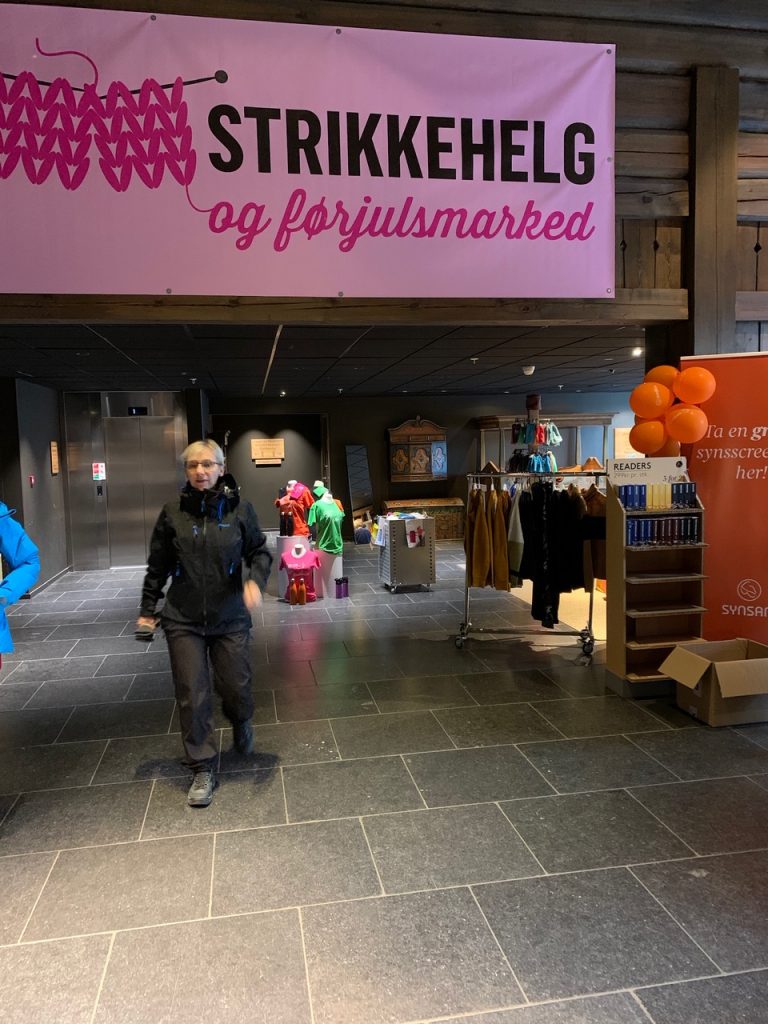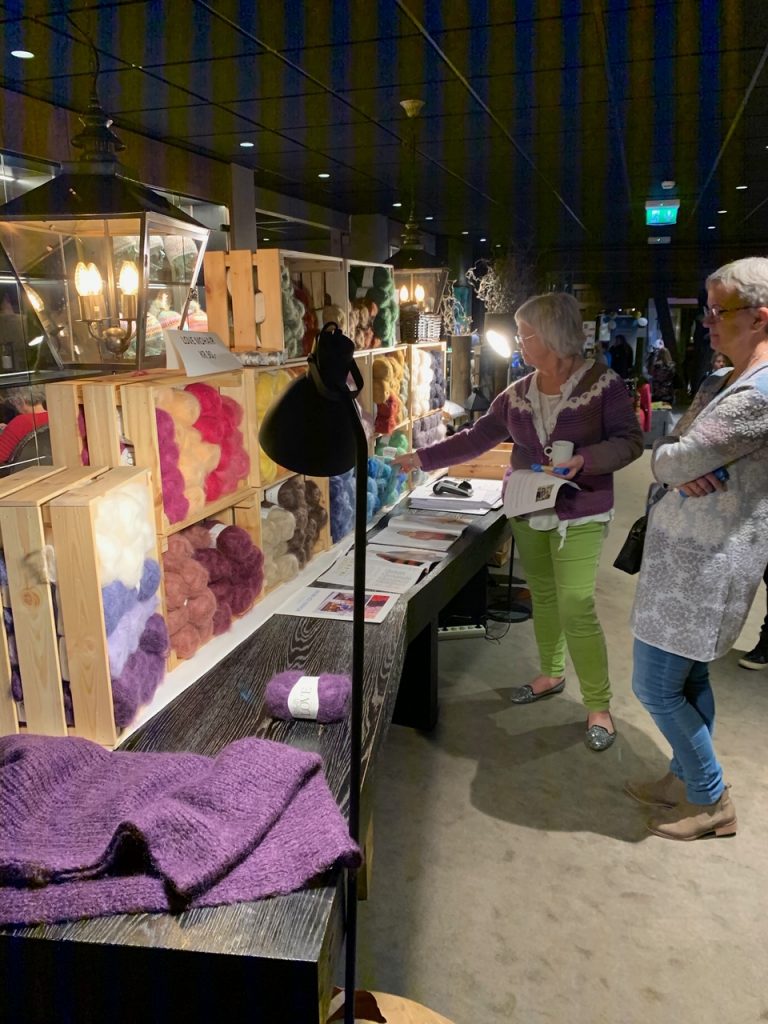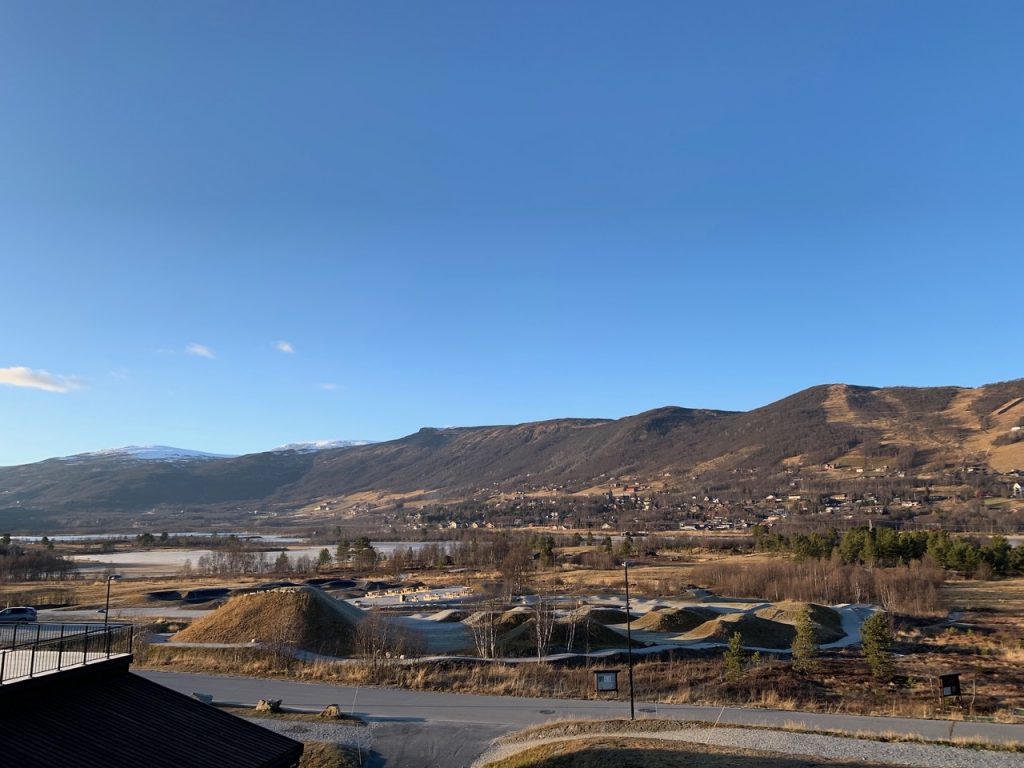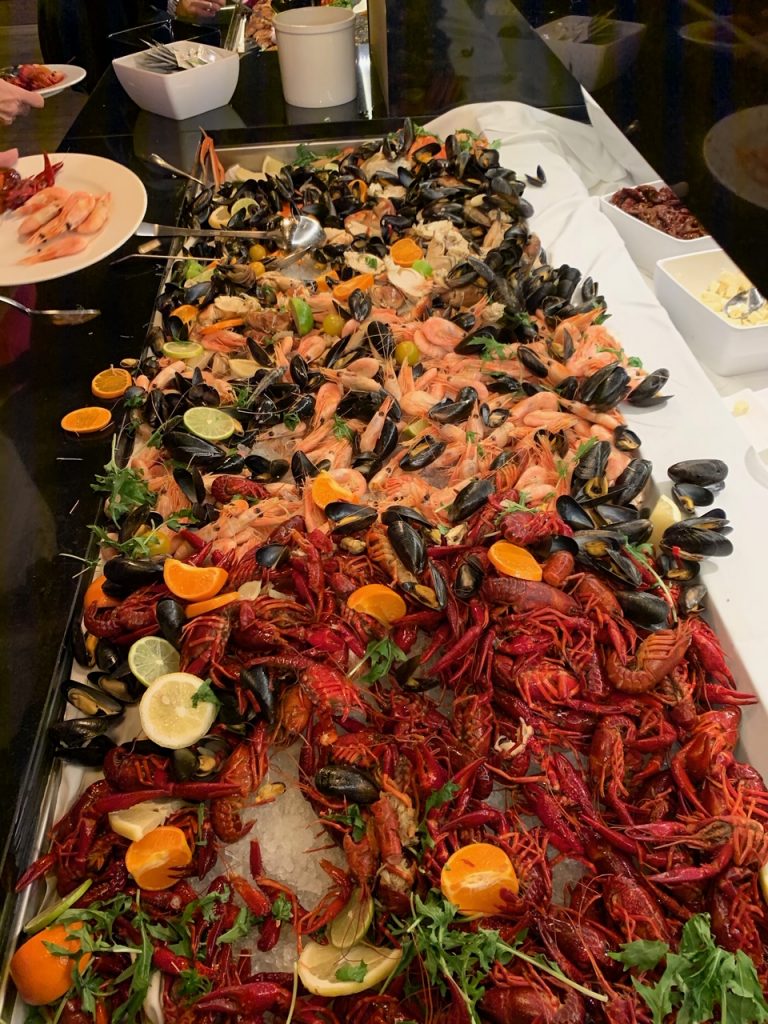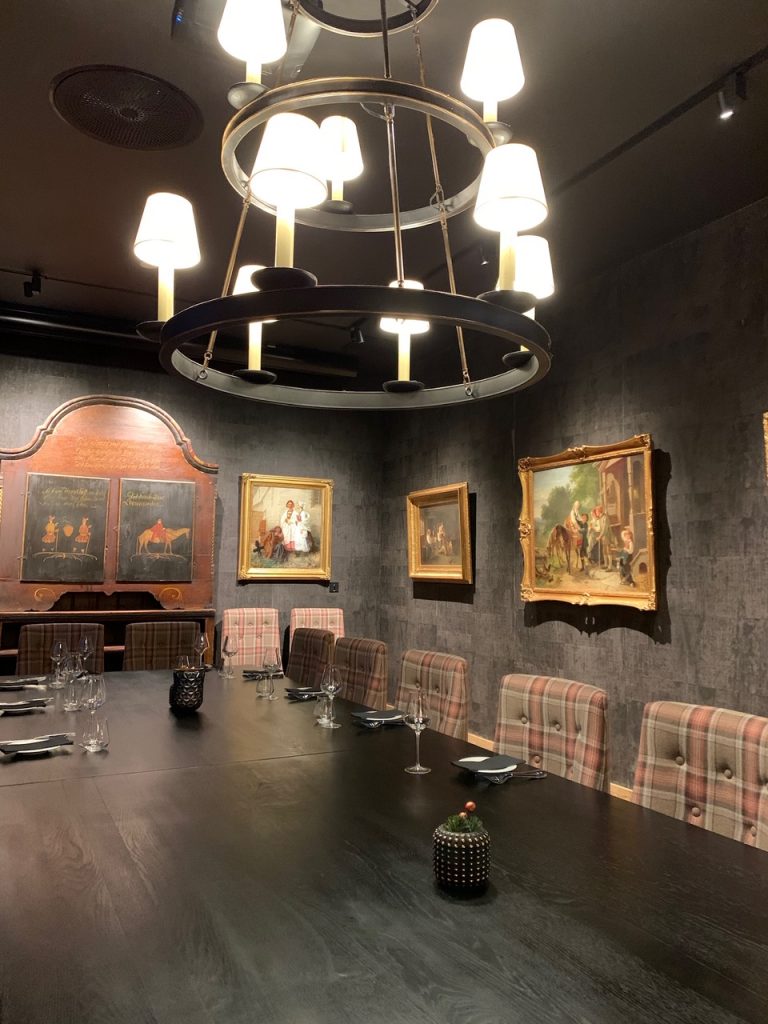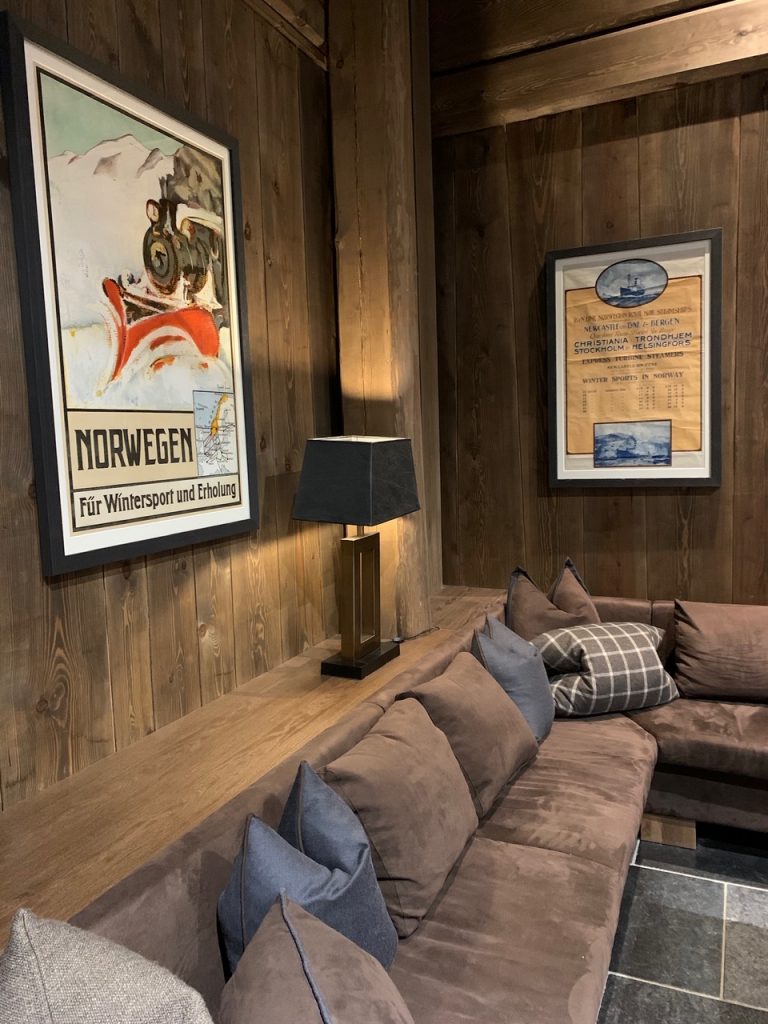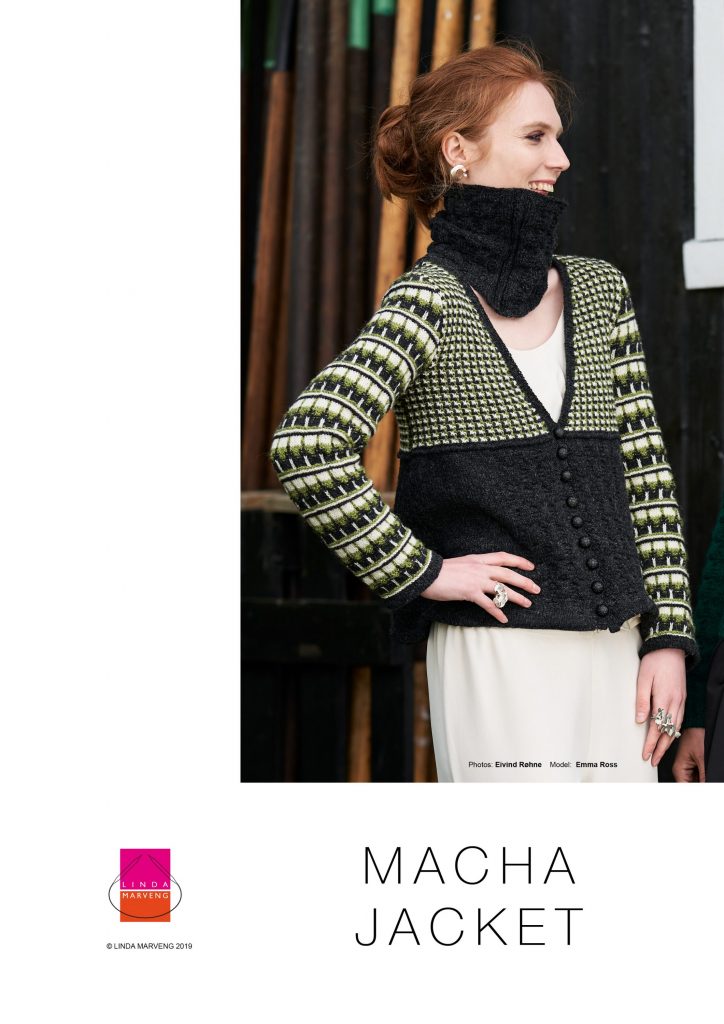 The test knit of the Macha Jacket and Macha Cowl has come to an end and the patterns have been released. I was so excited to see the colour combination chosen by my test knitters, one of them even let her what she had in her yarn stash decide upon the colours. Soon I will show you more versions of Macha Jacket. Both the designs were made for Hillesvåg Ullvarefabrikk in the Vilje Lamullgarn and in Sølje Pelsullgarn. On the pattern cover the jacket and the cable cowl is worn by Emma Ross, with make-up & hair by Sissel Fylling and jewellery by Kaja Gjedebo Design, photographed by Eivind Røhne at the Oslofjord Museum in May.
The test knit of the Macha Jacket and Macha Cowl has come to an end and the patterns have been released. I was so excited to see the colour combination chosen by my test knitters, one of them even let her what she had in her yarn stash decide upon the colours. Soon I will show you more versions of Macha Jacket. Both the designs were made for Hillesvåg Ullvarefabrikk in the Vilje Lamullgarn and in Sølje Pelsullgarn. On the pattern cover the jacket and the cable cowl is worn by Emma Ross, with make-up & hair by Sissel Fylling and jewellery by Kaja Gjedebo Design, photographed by Eivind Røhne at the Oslofjord Museum in May.
Macha is the Celtic protectress in peace as well as the name of this heavily textured jacket with cable and tweed body and stranded colorwork sleeves. A tuck marks the end of the cable pattern, the beginning of both the tweed pattern and the deep v-neck shaping. The Macha body is worked in pieces but the sleeves are knitted in the round to the armhole in stranded colourwork with purl stitches and garter stitch stripes in three contrasting colors in both Hillesvåg Ullvarefabrikk Vilje Lamull and Sølje Pelsull. A cable cowl completes the jacket which can also be worn together with the Macha cowl.
Sizes: XS (S, M, L, XL, 2XL)
Shown in size Small
Skill level: Experienced
Finished measurements:
Bust: 86 (92, 100, 106, 116, 126) cm/34 (36, 40, 42, 46, 50)“
Hip: 92 (98, 106, 112, 122, 132) cm/36 (39, 42, 44, 48, 52)”
Length: 61 (62, 63, 64, 65, 66) cm/24 (24.25, 24.75, 25.25, 25.5, 26)“
Sleeve length: 49 (50, 50, 50, 51, 51) cm/19.25 (19.75, 19.75, 19.75, 20, 20)”
Cable cowl: Circumference: 49 cm/19.25” Height: 19 cm/7.5”
Intended ease: + 5-7 cm/2-2.75”. Sample shown is 92 cm/36” and worn with + 6 cm/2.25” ease on model.
Yarn: Hillesvåg Ullvarefabrikk, Vilje Lamull (100% lambswool, 100 g, 375 m/410 yds). The sample is knitted in;
COL A: Charcoal 7415: 3 (3, 3, 3, 4, 4) skeins; 825 (923, 1020, 1118, 1275, 1433) m/902 (1009, 1115, 1223, 1394, 1567) yds.
COL B: Natural 7400: 1 (1, 1, 1, 2, 2) skeins; 225 (262, 300, 338, 401, 465) m/246 (287, 328, 370, 439, 509) yds.
Sølje Pelsull (100% pelt wool, 350 m/383 yds, 100 g). The sample is knitted in;
COL C: Lime 2107: 1 (1, 1, 1, 2, 2) skeins; 210 (245, 280, 315, 375, 434) m/230 (268, 306, 344, 410, 475) yds.
Cable cowl: COL A: Remnants or 1 skein: 168 m/184 yds.
https://www.ull.no/produktkategori/garn/vilje-lamullgarn/
https://www.ull.no/produktkategori/garn/solje-pelsullgarn/
Yarn alternatives: Cascade 220 Sport (100% wool, 50 g, 150 m/164 yds).
http://www.cascadeyarns.com/cascade-Cascade220Sport.htm
Tosh Euro Sock (100% wool, 100 g, 397 m/435 yds).
https://madelinetosh.com/collections/fingering-sock
Berroco Cosma (60% alpaca, 30% wool, 10% silk, 50 g, 150 m/164 yds).
http://www.berroco.com/yarns/berroco-cosma
Or another Sport/5 ply or Fingering 4/ply yarn.
Needles: 2.5 mm/US 1.5 circular needles (either 120 cm/47” or 2 sets of 80 cm/32”) for hems and buttonband.
2.5 mm/US 1.5 DPNs for hem on sleeves.
3 mm/US 2.5 circular needle for body and sleeves (2 sets of 80 cm/32” for tucks and 40 cm/16”).
3 mm/US 2.5 DPNs for sleeves.
3.25 mm/US 3 straight needles for sleeve cap.
3.5 mm/US 4 circular needle (40 cm/16”) for sleeves.
3.5 mm/US 4 DPNs for sleeves.
Adjust needle size as needed to match gauge.
Notions: 10 Buttons (12 mm/0.47”), stitch markers (removable), stitch holders, cable needle and yarn needle.
Gauge: 24 sts and 32 rows in st st using 3 mm/US 2.5 needle measures 10 cm/4” square.
24 sts and 30 rnds in stranded colorwork in st st with purl sts using 3.5 mm/US 4 needle measures 10 cm/4” square.
24 sts and 40 rnds in garter st using 3 mm/US 2.5 needle measures 10 cm/4” square.
26-sts cable panel using 3 mm/US 2.5 measures 10 cm/4” across.
50-sts cable panel using 3 mm/US 2.5 measures 19.5 cm/7.75” across.
22 sts and 54 rows in Tweed using 3.5 mm/US 4 needle measures 10 cm/4” square.
Notes: The jacket is worked in pieces and seamed. The stranded colorwork is worked mainly in stockinette stitch with a few purl stitches and the repeat ends in 6 rows of garter stitch worked on a smaller needle to stay in gauge. The cable cowl is worked in the round with ribbing on each side of cable panels. The tucks are made with 2 circular needles held parallel, hence the bottom part of the body is worked with circular needles for ease.
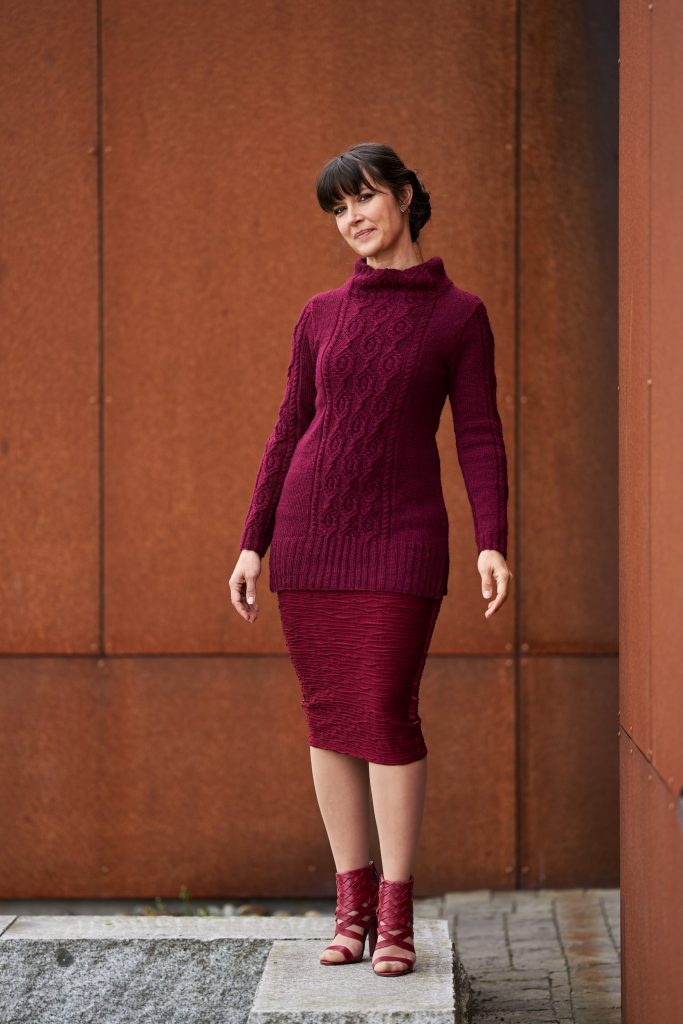 Here is the last series of photos from the Oslofjord Museum for now, it is of the O-Chem Tunic designed for Interweave Knits Winter 2019 worn by the gorgeous Kaja Kvernbakken, with hair & makeup by Sissel Fylling and jewellery by Kaja Gjedebo Design, brilliantly captured next to the corten steel wall by Eivind Røhne. I decided to style the O-Chem Tunic with a burgundy Wolford tube skirt since the colours matched so well and with my red pair of Amanda Skovgaard shoes.
Here is the last series of photos from the Oslofjord Museum for now, it is of the O-Chem Tunic designed for Interweave Knits Winter 2019 worn by the gorgeous Kaja Kvernbakken, with hair & makeup by Sissel Fylling and jewellery by Kaja Gjedebo Design, brilliantly captured next to the corten steel wall by Eivind Røhne. I decided to style the O-Chem Tunic with a burgundy Wolford tube skirt since the colours matched so well and with my red pair of Amanda Skovgaard shoes.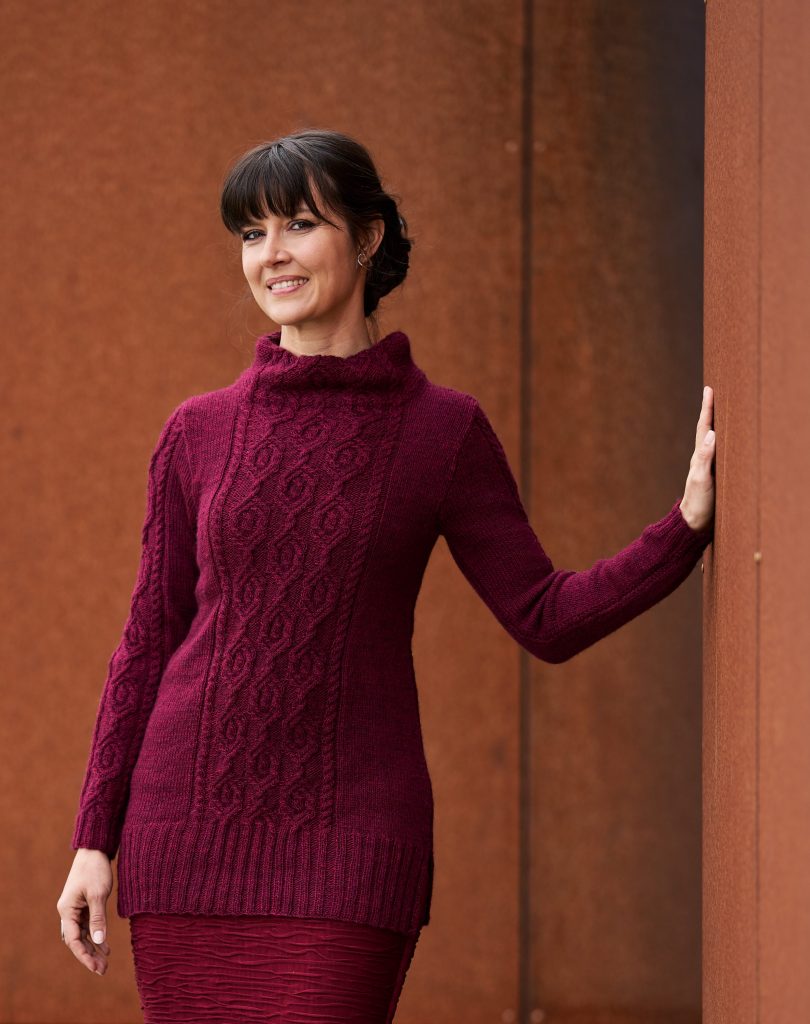 The O-Chem Tunic features a striking central panel of hexagonal cables inspired by organic chemisty compounds. For visual balance with the three cables in the body, the sleeves have one main cable running down the arm, and all the cables in the sweater are framed with rope cables. The sweater sports a cozy standing collar and side vents in the rib at the bottom for a relaxed fit.
The O-Chem Tunic features a striking central panel of hexagonal cables inspired by organic chemisty compounds. For visual balance with the three cables in the body, the sleeves have one main cable running down the arm, and all the cables in the sweater are framed with rope cables. The sweater sports a cozy standing collar and side vents in the rib at the bottom for a relaxed fit.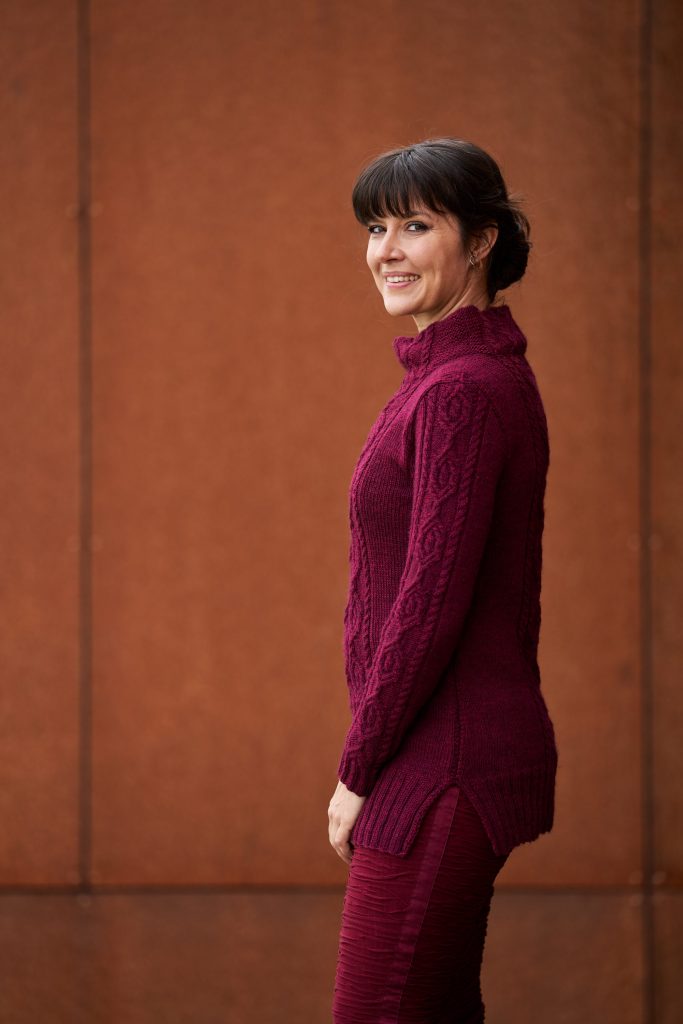 The O-Chem Tunic is knitted in Tahki Yarns, Alden made in 50% merino wool, 25% alpaca, 25% acryl, with 230 meters/250 yards on each 50 gram ball. The sample is knitted in 06 Wine and only takes 7 balls. The gauge is 20 stitches and 30 rows in stockinette stitch using 3.75 mm/US 5 measures 10 cm/4” square.
The O-Chem Tunic is knitted in Tahki Yarns, Alden made in 50% merino wool, 25% alpaca, 25% acryl, with 230 meters/250 yards on each 50 gram ball. The sample is knitted in 06 Wine and only takes 7 balls. The gauge is 20 stitches and 30 rows in stockinette stitch using 3.75 mm/US 5 measures 10 cm/4” square.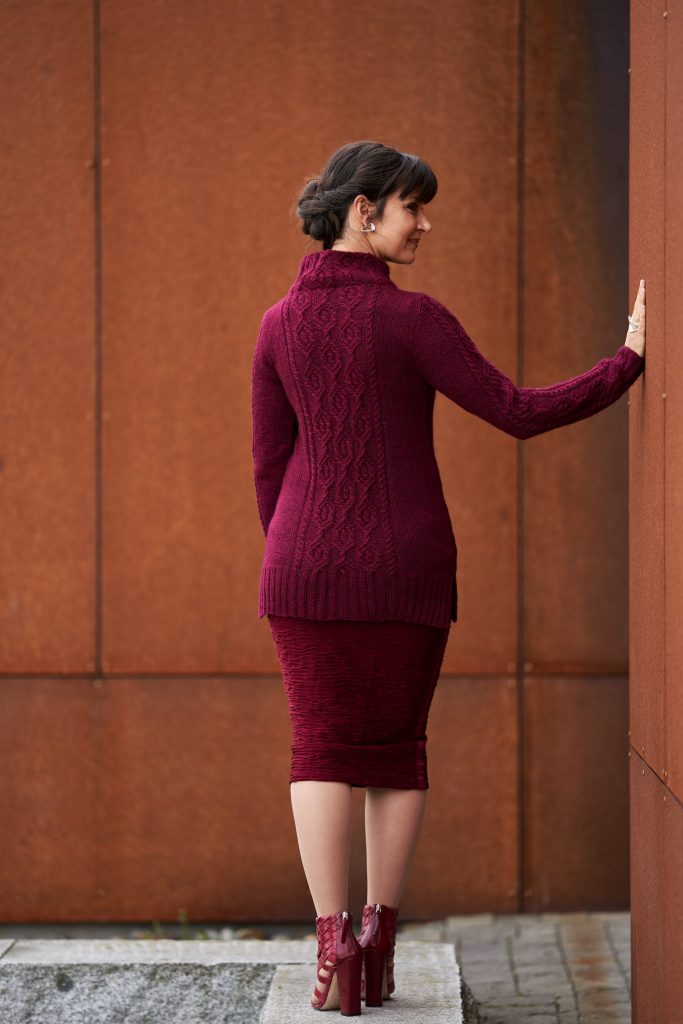 The O-Chem Tunic sample I knitted was returned from Interweave in the US, so that I could photograph it again and release the pattern, when the rights returned to me after a year.
The O-Chem Tunic sample I knitted was returned from Interweave in the US, so that I could photograph it again and release the pattern, when the rights returned to me after a year.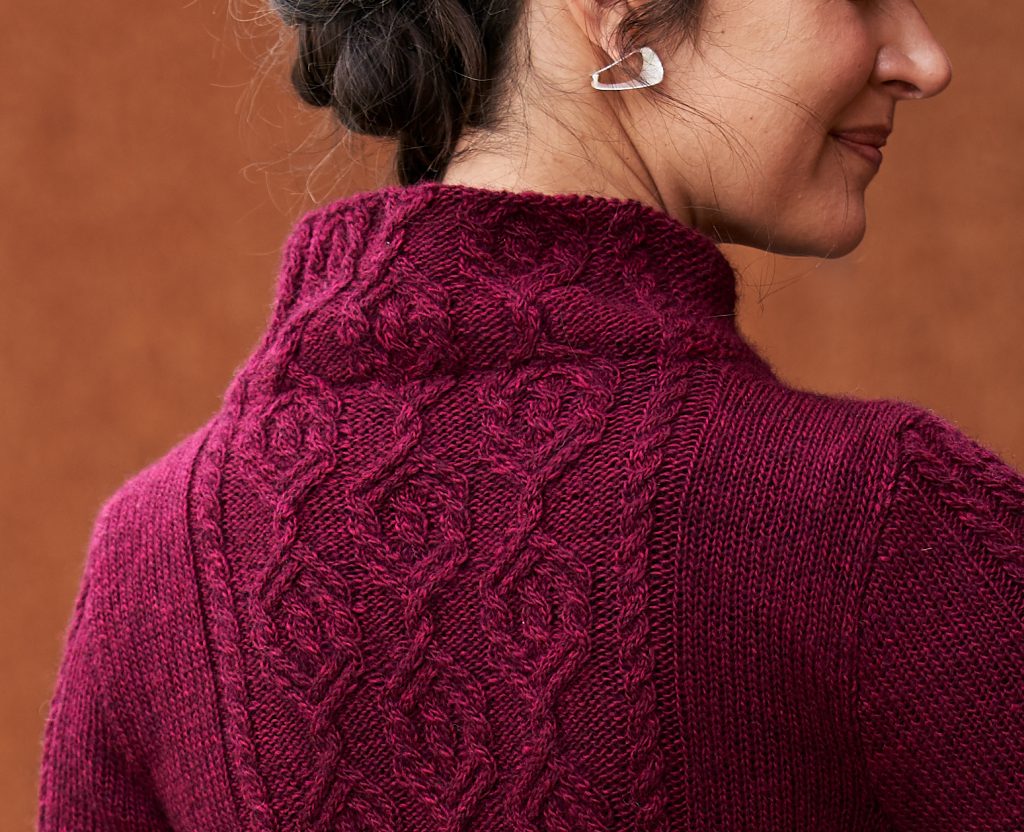 I have graded this from size XS to 2XL with a bust circumference of 81 cm/32 to 124 cm/49″. The sample in size Medium has a 94 cm/37” bust circumference and is worn with + 8 cm/3.25” ease on the model. I loved seeing this pullover on Kaja! I am so proud to have such a fabulous team to work with! Thank you!
I have graded this from size XS to 2XL with a bust circumference of 81 cm/32 to 124 cm/49″. The sample in size Medium has a 94 cm/37” bust circumference and is worn with + 8 cm/3.25” ease on the model. I loved seeing this pullover on Kaja! I am so proud to have such a fabulous team to work with! Thank you!
